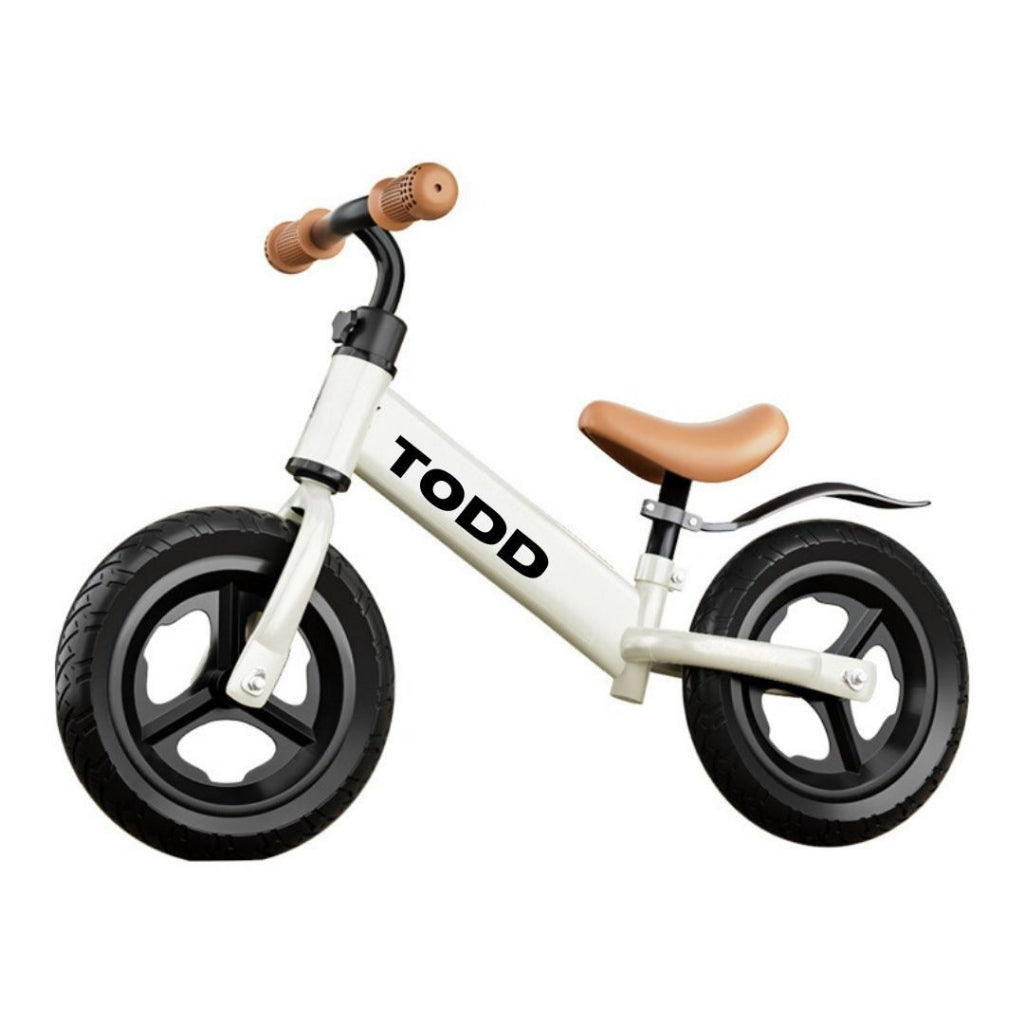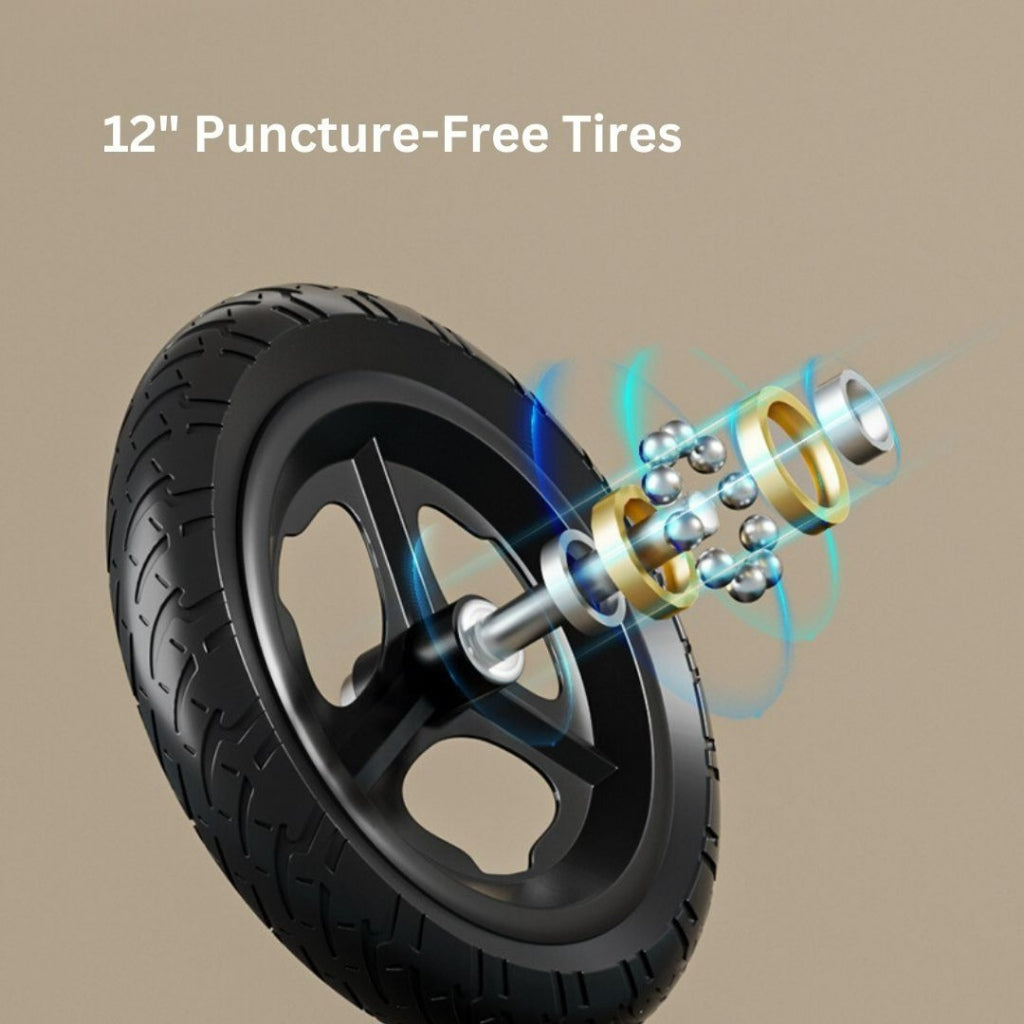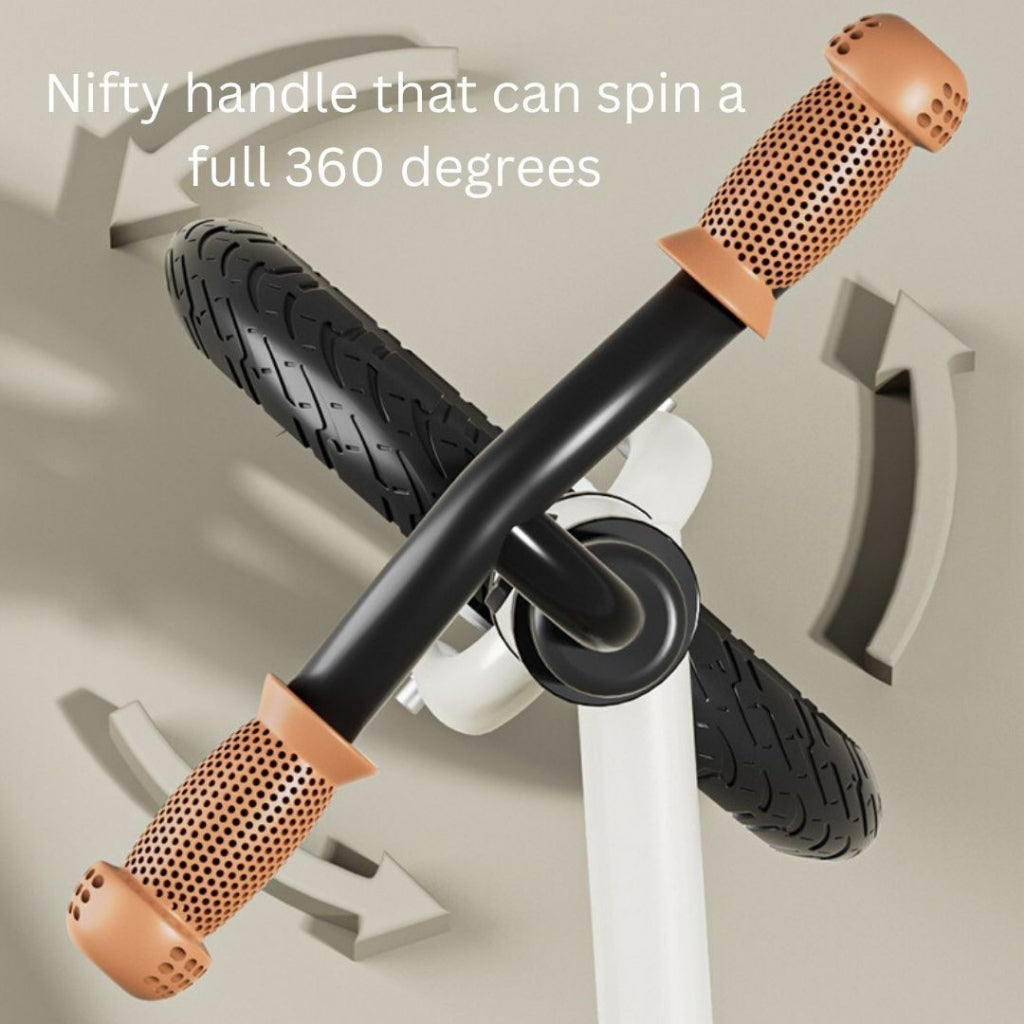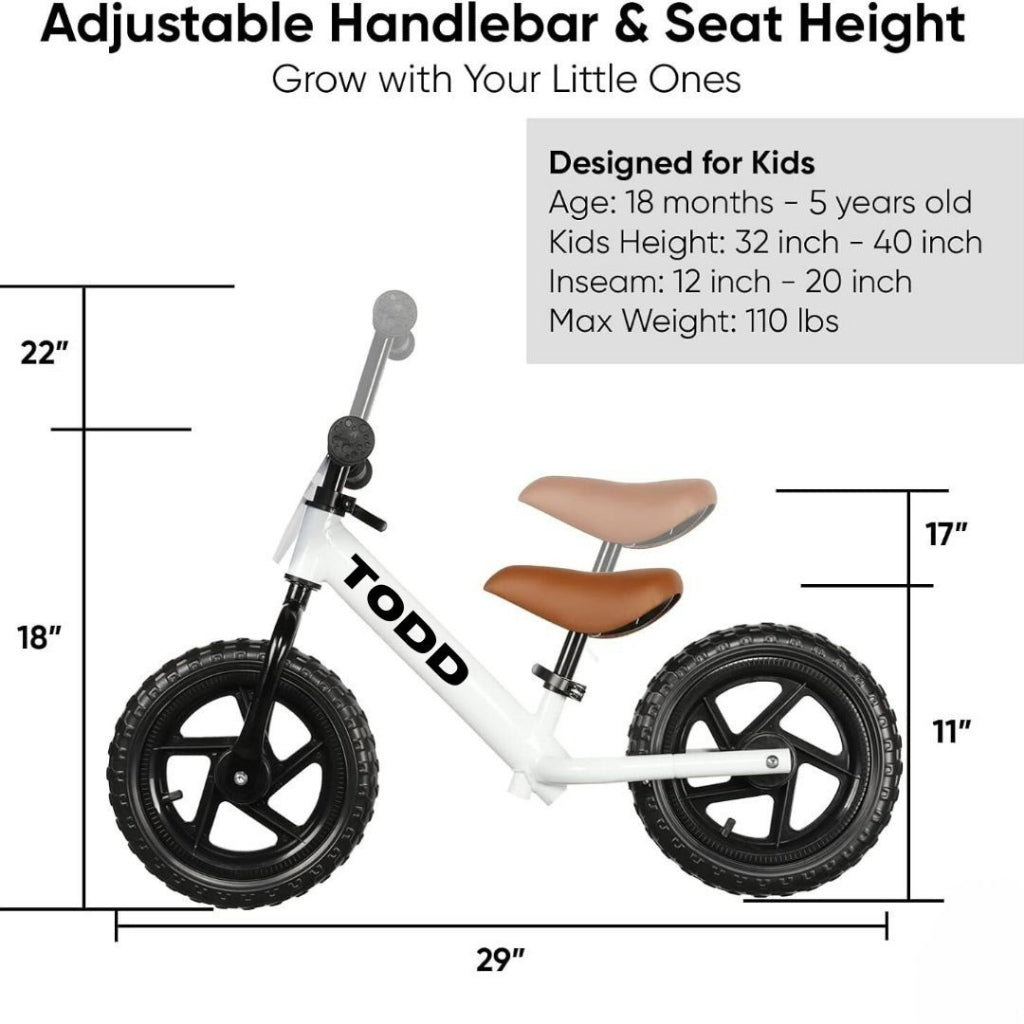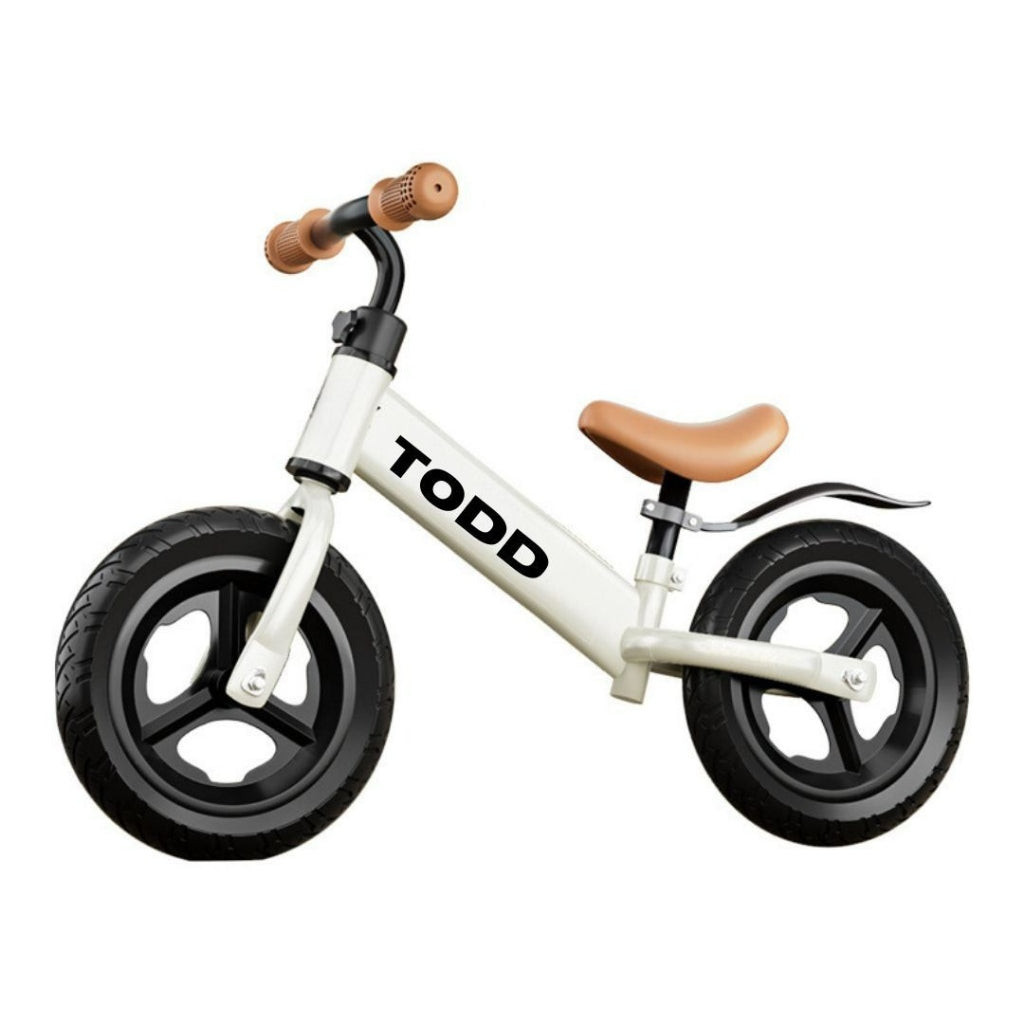
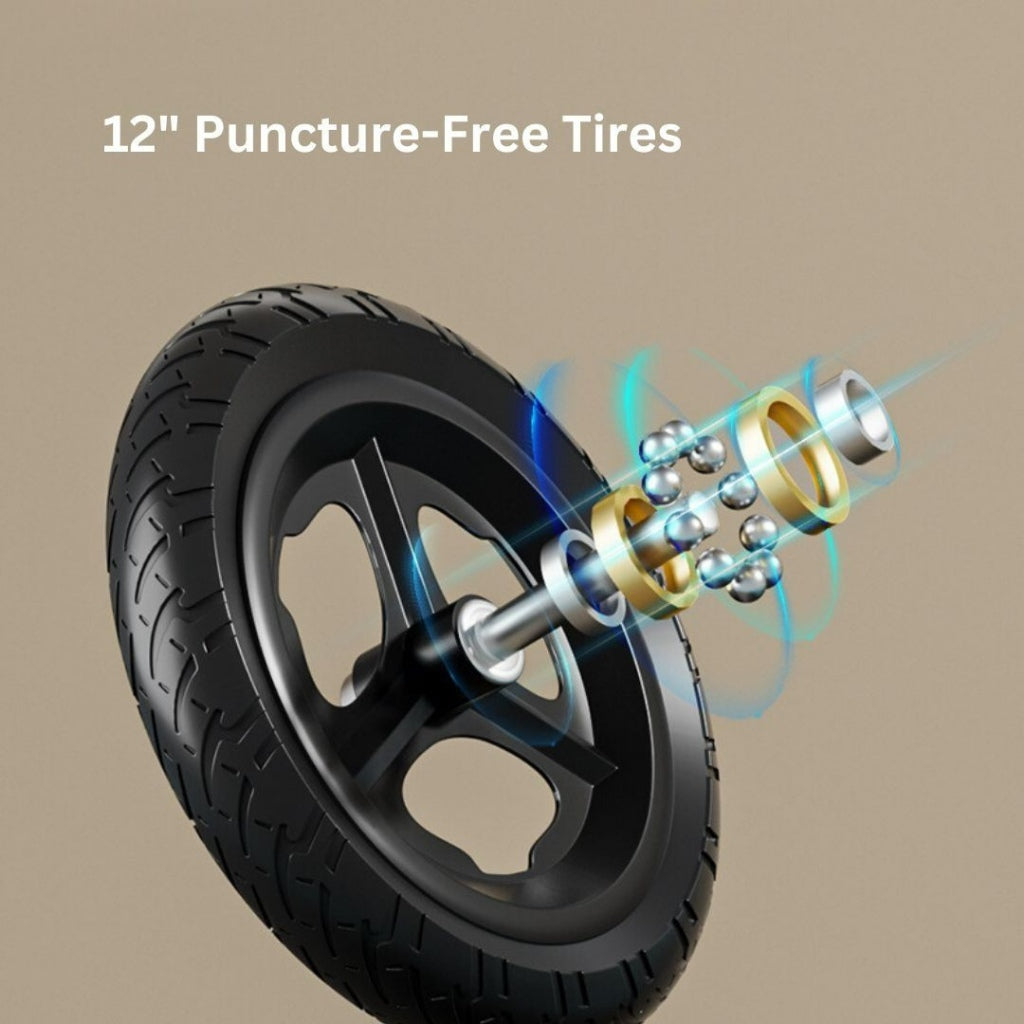
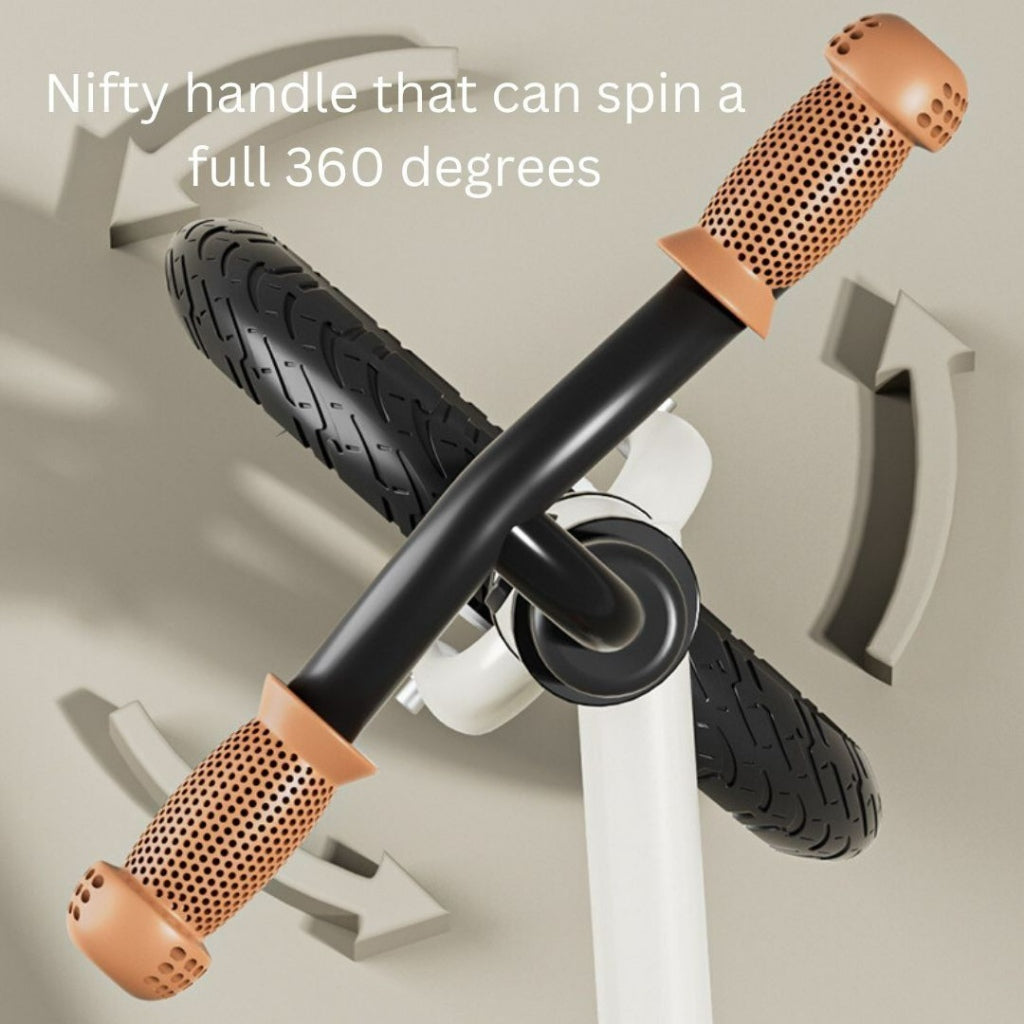
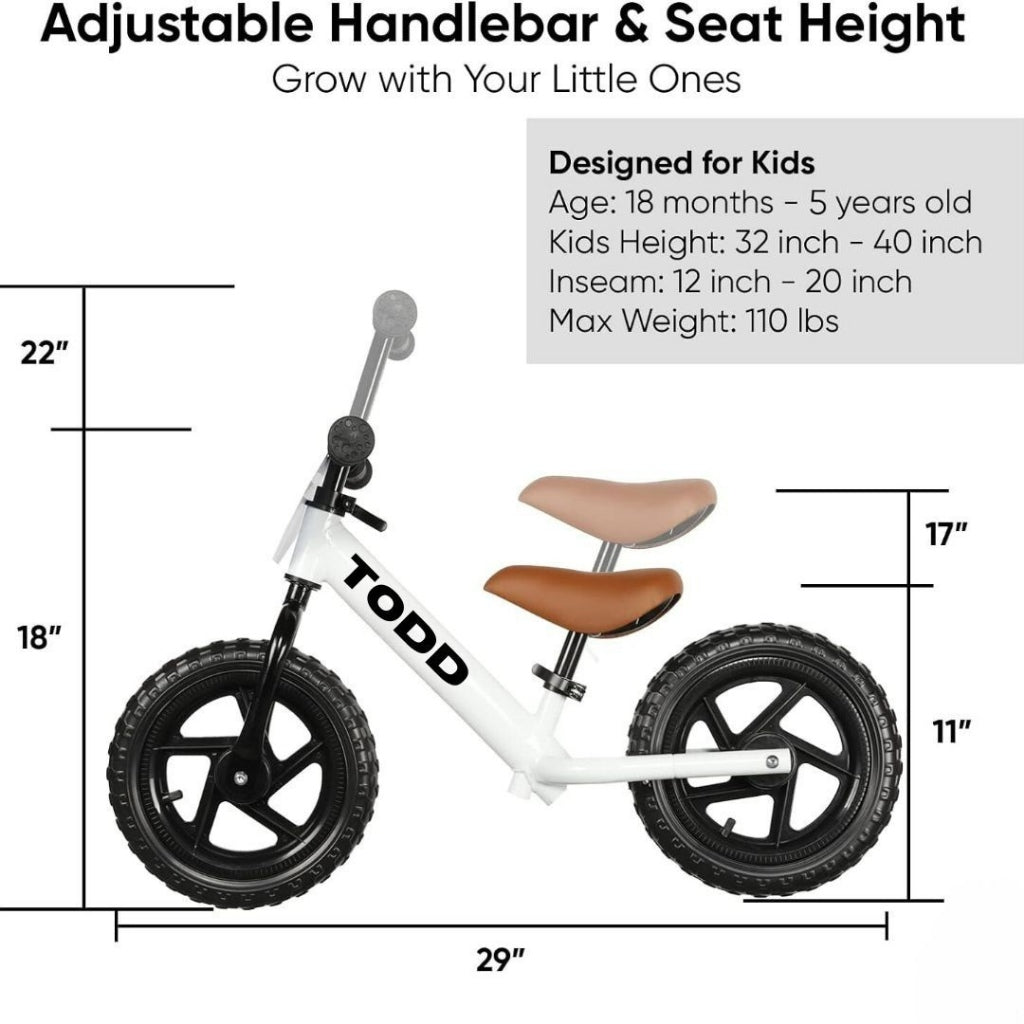
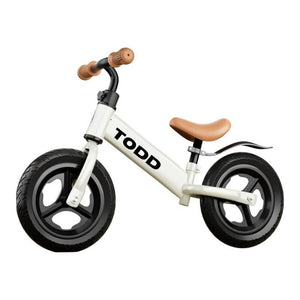
EARLY LEARNING BALANCE BIKE – A fun way to introduce small toddlers to riding bicycles this girls and boys balance bike lets them push, stand, and walk their way around the outdoors with a sturdy frame and well-balanced, kid-friendly design for 18 months to 5 years old.
CUSTOMIZE PLATE – Each balancing bike comes with a removable customizable plate, where kids can design their own plate with the stickers or draw anything they want.
ENHANCED SAFETY – Along with a soft, rubber grip handlebars, a soft PU seat, this kids balance bike has built in a wide tough carbon-steel frame, it can holds up to 110 lbs and you never need to worry that it will break when kids are learning to ride around.
EXTRA-THICK ALL-TERRAIN TIRES – We want kids to feel strong and stable when they’re moving on grass and sidewalks which is why we added puncture-resistant tires to the front and back of each balance bike for 5-year old’s and 18-month-old riders.
GROW WITH YOUR KIDS – We know kids grow fast and we would like them to enjoy their riding partner longer, both handlebar and seat height can be adjusted, the quick release mechanism makes it really easy and safe to adjust the handlebar and seat height to your needs.
What you cover in your shipping policy and how you communicate it will be highly dependent on your current business operations and supply chain. The goal is to be transparent with customers.
As 2020 brings unforeseen shipping delays and increased carrier costs, it's more important than ever to keep your shipping policy up to date with the following key points in mind:
- Essential shipping details are easy to find. While it is common practice to keep a link to your shipping policy page in the footer of your website, consider how you can also surface important shipping details in the right place at the right time (e.g. on your product page or website banner).
- Clear and concise presentation. Don’t make customers comb through your shipping policy page for the information they need. Whenever possible, make it easy to navigate with clear subheadings, tables, bolded text, and links to learn more.
- Order processing times. After an order is placed, how many days will it take to get it ready to ship? It’s worth communicating if you’re excluding weekends and/or holidays, and if you have certain cutoff times for processing orders (e.g. orders received after 5pm will be processed the next business day). If changes occur within your supply chain, due to peak periods or as a result of COVID-19, you should update your processing times to reflect it.
- Domestic and international shipping options. What are the qualifying regions for your domestic shipping options? International shipping can be broken down in its own section where you list the countries you ship to and estimated delivery timelines. If you offer several shipping options, you can list them in a table so the information is easy to scan. Shipping costs. Break down your shipping costs for the customer. If you have a free shipping threshold, you can communicate in various places as an incentive for customers. Any potential surprise fees should be surfaced too, such as duties and taxes the customer may incur.
| Title |
Default Title |
|---|
